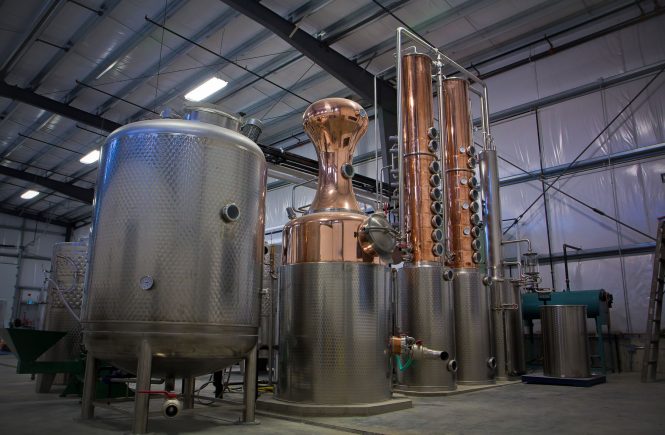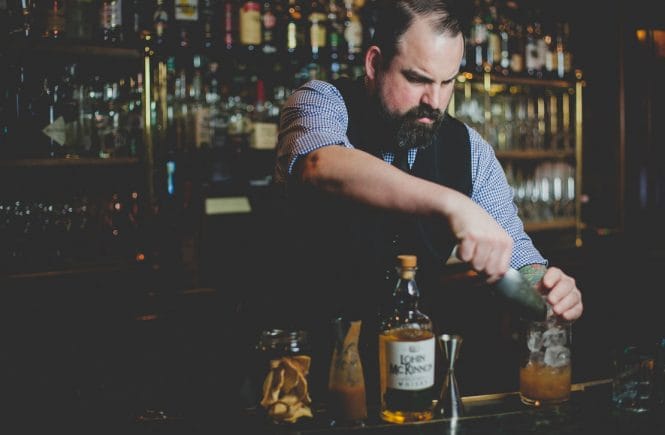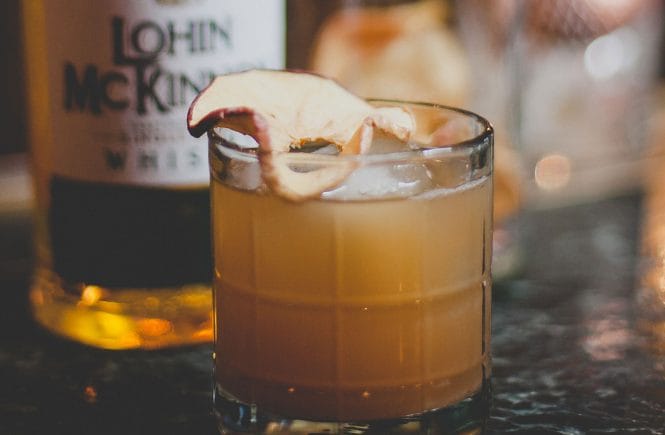Artisan distilling started a conversation about the terroir of spirits. But can you taste those uber-local ingredients in the bottle?
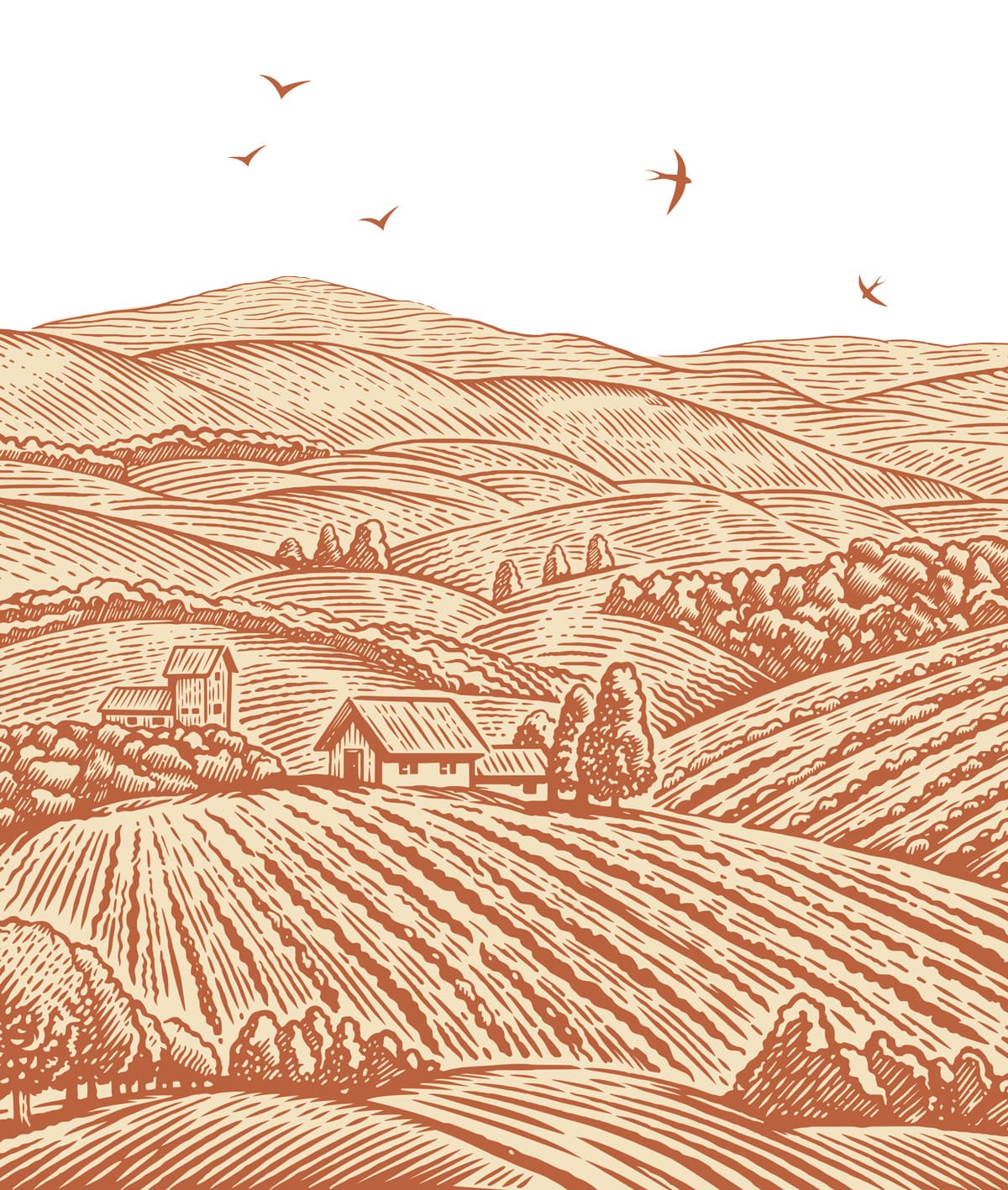
On the drive up to Saanichton from Victoria, hand-lettered signs for honey and free-range eggs compete with honour-system farm stands exchanging wildflowers, produce or jam for money stuffed in a can. When I arrive on an oceanside hilltop, Ken Winchester points out 25 acres of certified organic vineyards, maple and fruit trees and, farther in the distance, barley being farmed to his specs before it’s malted at Phillips Brewery in Victoria. “I’m also a beekeeper, among other things,” says the deVine winemaker and Bruichladdich-trained distiller, gesturing to the hives. He’s more than that: he’s a farm-to-flask disciple.
A winery tour, anywhere in the world, includes a stroll past “show vines,” and the earthy insight that wine is made in the vineyard. Yet the notion of terroir—that a product tastes of where it’s grown—is a new-old notion in distilling. Over the decades, as small-batch distilleries were acquired by corporations, global grain might have replaced local crops on the mash bill. Despite all the Scots’ talk about the alchemy of the local bog/river/aquifer—and the fervour for B.C. gins with botanicals foraged right under your nose—for decades, the character of spirits has been defined more in the distillery and barrel than on the farm.
Today, distilleries such as Seattle’s Westland (making unique Pacific Northwest whiskey) or Alberta’s Eau Claire (growing grain on its own horse-plowed fields) are injecting terroir into their spirits.
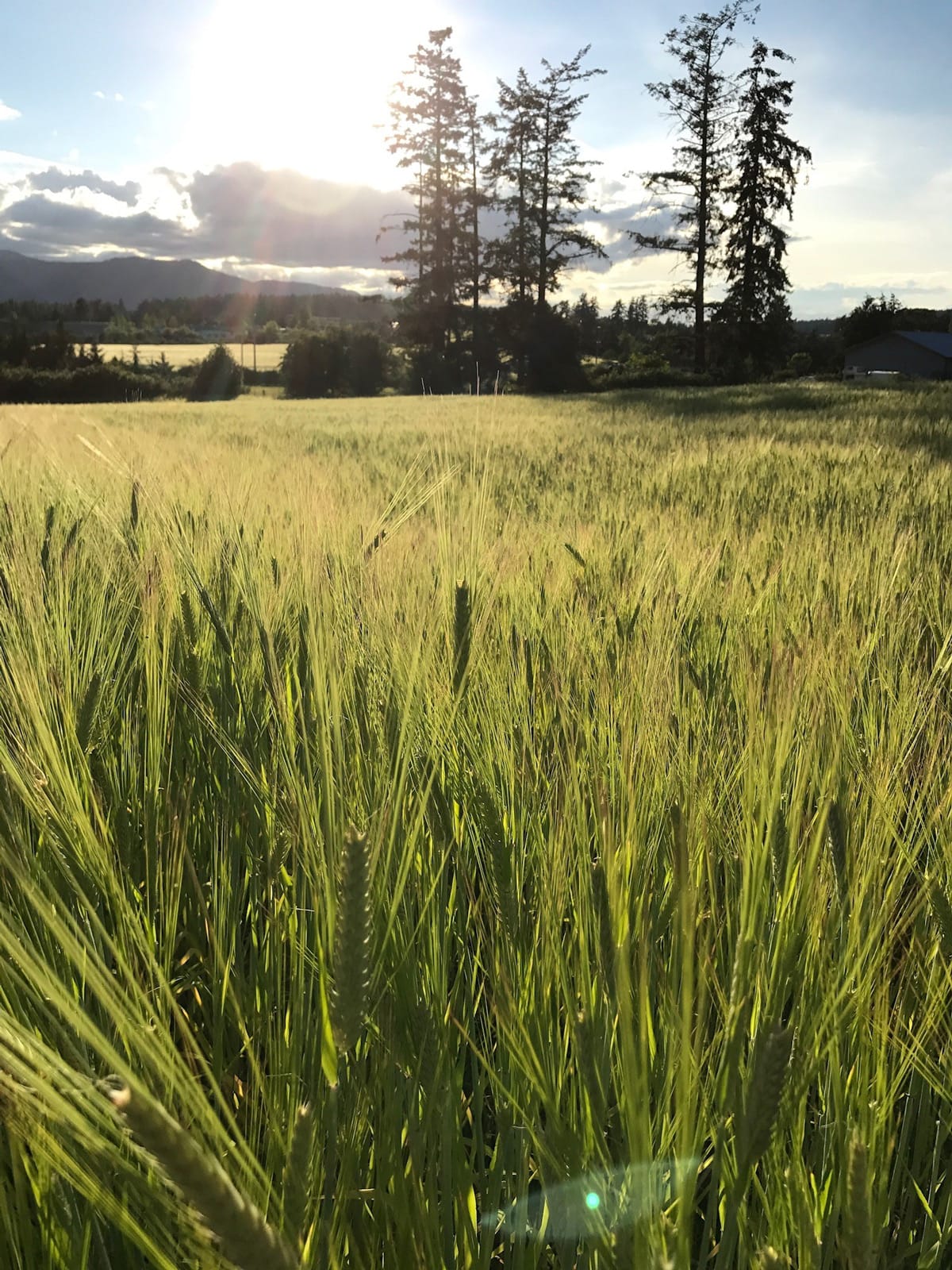
Back at deVine, Winchester’s distillery is the scratch-kitchen of spirits. He makes a richly herbaceous Vin Gin and vermouths from the property’s grapes, rum from ultra-local honey, single malt from Saanich barley and a nutty Ancient Grains whisky from B.C. kamut, spelt, emmer and “what might be the entire province’s production of einkorn,” he jokes. “If we can grow it locally, our spirit is going to be different so we can tell that story—and people love it.”
Similarly, Okanagan Spirits collaborated with a Coldstream Valley family farm to grow the heritage seed corn for its smooth BRBN whisky. “We had three years of crop failures to even get it to grow,” says CEO Tyler Dyck. “We feel like the field and the sun in that area are going to give it special characteristics over grains grown elsewhere.”
Of course, there’s nothing wrong with the high-quality grain most distillers source from Gambrinus, CMG or other B.C. suppliers. Yet, when your distillery is located on an actual farm, like Shelter Point, the draw to explore terroir is irresistible. “There are very few distilleries in the New World that grow and use their own grain,” says distiller and operations manager James Marinus. He and owner Patrick Evans intend to build one of them.
Barley thrives in the well-drained, gravelly soil of the Island’s northeast coast, where Evans’ family has tilled for decades. Marinus’ truck rolls past crops that may eventually become the distillery’s Canada One vodka, or, if plans to turn an empty shed into a malting plant come true, the molten gold of Shelter Point’s single malt whisky. “We could grow enough barley on the farm to supply our own production, easy,” he says. Shipping it to a malting plant and back is the only thing preventing them from closing the loop.
A few hours later in Victoria, I watch a 20-tonne batch of Saanich barley roast in the malting plant at Phillips Fermentorium, opened within the famed brewery in late 2015. “If we’re making our own spirits with grain from our own malt plant on site… that way, we can control our product better,” echoes brewer-turned-distiller Damon Bell. A deliciously heady, toasty smell fills the warm dusty air: that’s the smell of terroir, coming soon to your glass of artisan spirits.
—by Charlene Rooke


